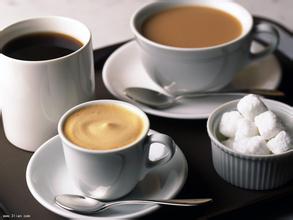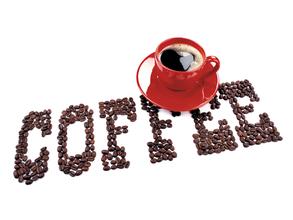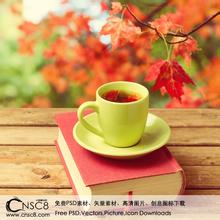How big is a cappuccino coffee cup?-the difference between an Italian coffee cup and a single product
How big is a cappuccino coffee cup?-the difference between an Italian coffee cup and a single product
The caffeine content of Puccino
Average caffeine content: small cup (240cc): 75 mg medium cup (360cc): 75 mg large cup (480cc): 150mg usually a cup of espresso is 10 ml, caffeine ratio: 75 mg. In addition, you can also choose low caffeine (to remove more than 98% of the caffeine) low caffeine average: small cup: 3 mg medium cup: 3 mg large cup: 6 mg
[edit this paragraph] dry cappuccino and wet cappuccino
Did you know that cappuccinos can be dry or wet? The so-called dry cappuccino (Dry Cappuccino) refers to the conditioning method with more milk bubbles and less milk. it tastes stronger than milk and is suitable for people with heavy taste. When it comes to wet cappuccino (Wet Cappuccino), it refers to the practice of fewer milk bubbles and more milk, with milk fragrance overshadowing the thick coffee flavor, which is suitable for those with light taste.
The flavor of the wet cappuccino is similar to that of the popular latte. Generally speaking, the taste of cappuccino is heavier than that of latte. If you have a heavy taste, you might as well order cappuccino or dry cappuccino. If you are not used to the heavy smell of coffee, you can order latte or wet cappuccino.
a. Espresso is a 1 ounce (30ml ±5ml) drink made from ground coffee powder and must be extracted from a two-headed hand.
b. Coffee beans are products that are processed and roasted from the fruits of various coffee trees.
c. Coffee beans can not have any additives, flavors, dyes, spices, fragrances, liquids, powders and so on. But at any time from when coffee beans are picked (like cherries) to extracted into drinks, cultivation during material growth, and primary processing (such as fertilizers, etc.) are allowed.
d. Coffee beans can be blended, individual, from a country or a manor, and so on.
e. All sensory judges must have a full espresso, and if the presented drink fails to comply with the definition of espresso, the taste and sensory scores will be reflected by the sensory judges. Making espresso can prepare a large number of different kinds of coffee beans.
f. The brewing temperature of espresso should be controlled between 90.5-96 degrees Celsius (195-205 degrees Fahrenheit).
g. The brewing pressure of the Italian coffee machine should be set between 8.5 and 9.5 atmospheres.
h. The extraction time difference between two espresso (2 cups and one serving) must be within 3 seconds, otherwise the "extraction time" item will be given "No". The extraction time is recommended between 20 and 30 seconds, but it is not mandatory.

Important Notice :
前街咖啡 FrontStreet Coffee has moved to new addredd:
FrontStreet Coffee Address: 315,Donghua East Road,GuangZhou
Tel:020 38364473
- Prev

The practice of Italian coffee the characteristics of cappuccino, the taste of latte.
Espresso the characteristics of cappuccino taste latte characteristics of Italian espresso, add a thick layer of foaming milk, become a cappuccino. The quality of espresso can be seen in milk and foam, but it is still an important factor in determining the taste of cappuccino. Pour the partially skimmed milk into a pot, then use the foamer to let
- Next

What is the taste of Italian Blue Mountain Coffee
What is the taste of Italian Blue Mountain Coffee Coffee beans cultivated by lava in the Conna region of Hawaii have a strong, mellow flavor with a slightly wine flavor. The selected Conna coffee has a moderate sour taste and a gentle and rich taste, as well as a unique mellow flavor, which is unforgettable for coffee lovers. At present, due to the decreasing production, and
Related
- Beginners will see the "Coffee pull flower" guide!
- What is the difference between ice blog purified milk and ordinary milk coffee?
- Why is the Philippines the largest producer of crops in Liberia?
- For coffee extraction, should the fine powder be retained?
- How does extracted espresso fill pressed powder? How much strength does it take to press the powder?
- How to make jasmine cold extract coffee? Is the jasmine + latte good?
- Will this little toy really make the coffee taste better? How does Lily Drip affect coffee extraction?
- Will the action of slapping the filter cup also affect coffee extraction?
- What's the difference between powder-to-water ratio and powder-to-liquid ratio?
- What is the Ethiopian local species? What does it have to do with Heirloom native species?

